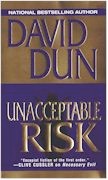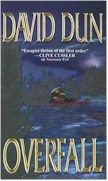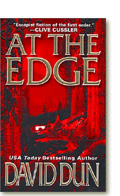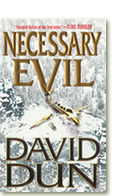


 |
|||


|
Keeping It Real In the front of The Da
Vinci code, Dan BrownÍs runaway bestseller, is a note telling readers
that all of the descriptions of architectural details and religious
practices are accurate. Although there is substantial debate about whether
the religious conclusions are true (in fact they may be quite false), the
important point is that the book contains enough authentic detail and is
supported by enough research that much of it sounds true. They are
actually holding classes to discuss the factual basis of a work of
fiction. That is a remarkable development. Ridley Pearson, the well-known
mystery writer, is another author who has long had an eye for authentic
detail, and as a result many cops read his cop stories. Meticulous
research made The Diary of Ellen Rimbauer a huge success. Authenticity is
nothing new to Clive Cussler who made his way as a novelist doing research
on famous shipwrecks and using those tragedies to provide a historical
basis for his story. Brown, Pearson, and Cussler are pointing the
direction for many authors who are now hitting the research harder and
striving to bring a deep sense of realism to their stories. This growing trend
toward authenticity has affected my writing. All my books have settings
that I know well from personal experience, and I strive to make the
descriptions accurate. The same is true for much of the science. For Unacceptable
Risk, coming out in August, I traveled to the Amazon jungle so I could
picture the place more vividly as I put the setting into words. On a
recent trip to the San Juan Islands (located between Washington and
British Columbia),the setting for my current manuscript, my wife often
poked fun at me as I pulled out a notebook to jot down the length of a
pier, what I could see from a particular vantage point, descriptions of
the university laboratory, and the like. Most readers won't know if I get
a detail wrong, but I think they can tell when an author gets them right.
The story is always that much more convincing. Of course, I have been
known to bend the truth a bit, but most of my inventions are based on
fact. Tidal conditions similar to the Devil's Gate in Overfall
do exist but there isnÍt a place with that name. The other overfalls
that are mentioned in the story, such as Skookumchuck, are real and do
have the current speeds indicated. I got the idea from an actual wave that
I slammed through on an 85-foot research vessel. The skippers face, before
we hit the monster, reminded me of a hypochondriac who has just found a
new red bump. The wave actually loosened the superstructure of the boat. I also try to make the
science in my books as real as possible. Most of the inventions and
discoveries I describe are almost within reach. I have a growing circle of
research scientist friends whose brains I pick to keep my plots on the
frontiers of technology. I feel exhilaration at
the prospect of building authenticity through solid research. For me, that
is nearly as interesting as writing, and I hope my readers can sense
reality oozing from every page. „David Dun |
Read an online
excerpt |
Copyright 2001¿2004 by David Dun, All Rights
Reserved.
Home | Books
| Excerpts | Author
| Q&A | Feedback
| E-mail Us
Buy Info | Sign
Up for E-mail Updates



